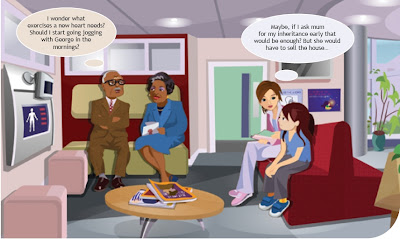Sarah started this class by writing up a blank timeline: 1985 at one end of the whiteboard, 2007 at the other. She asked the class to tell her where major developments in science communication would go within it. PUS, and events such as the Bodmer report ended up at one end, with PEST at the other. You might find the overview on this page a neat summary.
I then tried to synthesise some of the rest of term one in reference to a sightly 'sensational' story on bird flu. To quote Gregory and Miller on this topic:
sensationalism and gee-whizzary... [is] not a punishment inflicted on science stories by disdainful or malicious journalists. It arises in science journalism because of the rhetorical conventions of popularization (Gregory & Miller, 1998, 116-7)
This points us towards thinking about news values, and other contextual differences between the cultures producing news language and those constructing scientific discourse. It's also worth thinking about the specific context of the issue covered - are stories on MMR a different case from '
Climate Porn'?
In some ways linked to this, I also discussed questions around science and fiction. I went through the opinions of a variety of thinkers on the topic (e.g. Russell Stannard, Joan Solomon, Rosalind Haynes) and emphasised that students should take a developed approach to considering audience effects (an issue which is worth keeping in mind across the course)
Sarah then put some of term two together, by considering each of the specific media we've looked at.
She asked the class to list specific issues relating to these media, and what topics (such as boundary work, structure, interactivity, etc) might be an issue across them.





